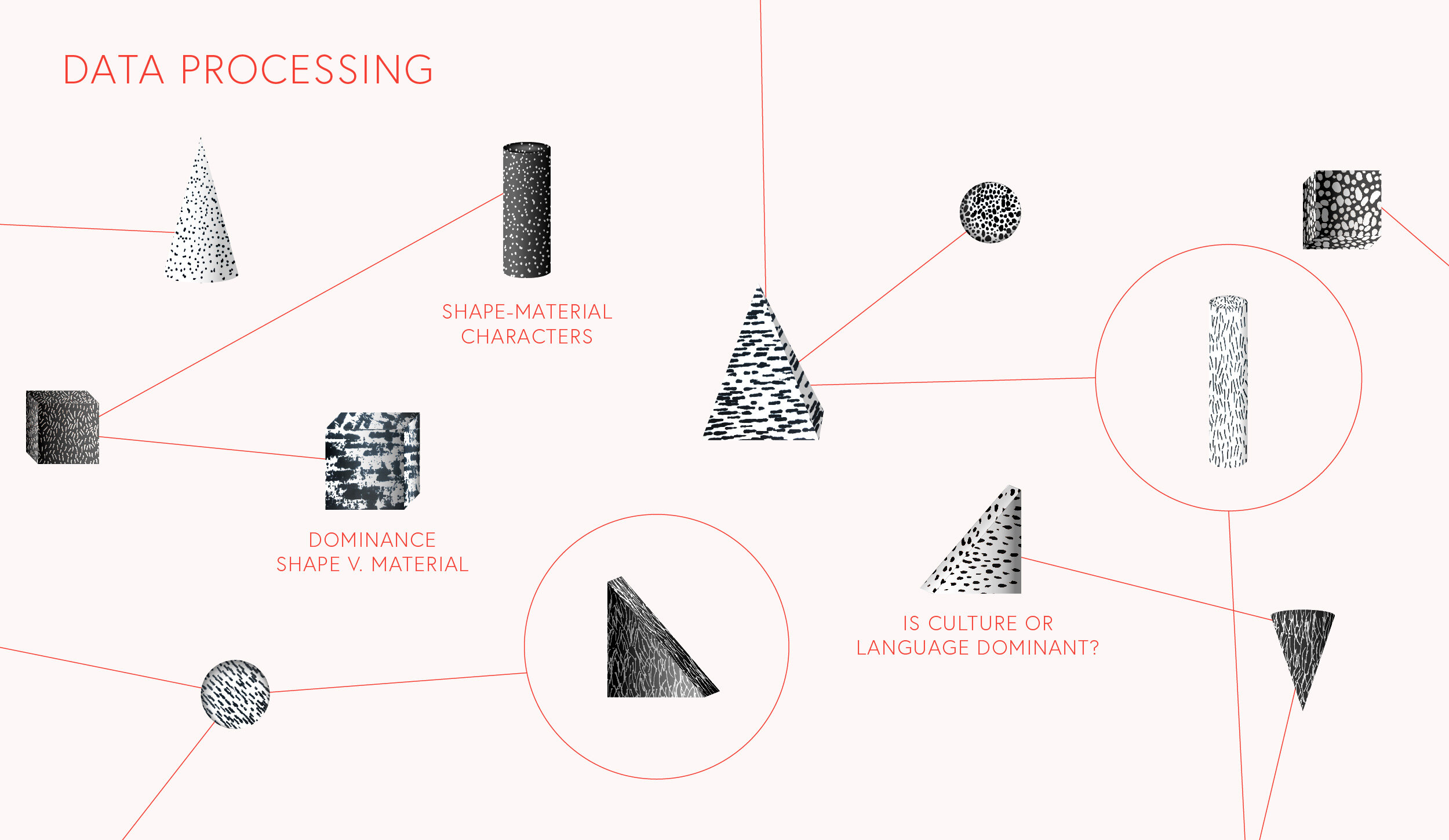MORPHE
A perceptual material library highlighting cross-cultural and cross-modal perception of 3D materials
PROCESS
UX Research
Research Planning
Research Moderator
Experiment Design
Data Analysis
Data Visualisation
KUKI Project Overview
OVERVIEW
Morphology (Morphe) is both the study of the form of “things” and the form of words. Morphe is an ongoing research study - run in both Japan and the U.S. with native participants. It investigates the relationships between 3D material perception, culture, language and emotion.
Current research into cross-modal material perception is devoid in that it doesn’t consider the types of research information into material psychology that would be practical for designers.
Morphe aims to provide a library of material research that is directly related and transferable for designers; enabling more designers to create with greater sensitivity to context, culture and cross modalities.
Material and Forms Tested in Experiment
INSIGHT
Current research into texture perception has predominantly looked at perception of 2D material textures of objects such as sandpaper or washing up brushes. Although such experiments can reap interesting results, the results are lacking worth to the people who can gain most benefits from such research – designers who are creating the physical, 3D forms and materials which then influence peoples emotional and perceptive states.
Experiment Test Set-Up
OPPORTUNITY
MATERIALS
Test material perception with materials most commonly used by designers - something current research has ignored.
3D FORM
Current research has focussed on materials in 2D form - which isn’t how we encounter such materials in real life. Testing materials in variant 3D forms provides research more akin to how we experience them in the real world.
CULTURE
Research has proven that culture shapes our sensory perceptions and processes - as in Blais’s Study “Culture Shapes How We Look at Faces” - which shows culture shapes how we look at faces. Does this apply for touch as well as vision?
Experiment Test Set-Up
PROCESS
The experiment covered each shape in 6 different materials. In total 30 different 3D shape and material combinations were tested. The materials used were rubber, PET plastic, metal, wood, cotton and woollen felt. These materials vary in physical composition, but crucially are elementary to most designers. Each participant was asked to associate the shapes and textures to the following categories:
1. Nonsense Words (i.e. Kiki, Bouba etc.)
2. Japanese Sound Symbolic Words
3. Textural Perception Adjectives
4. Emotional Response (Using the Self-Assessment Model (SAM’s) as this is appropriate for the cross-culture nature of the experiment).
Testing materials and forms across cultures
OUTCOME
Morphe aims become a body of research which acts like a perceptual material library; describing the psychological and emotional responses people have to materials depending on culture, form and language. The three main objectives are to:
- Educate designers on emotional and perceptual value of materials
- Promote designers understanding of how culture influences their design’s perception
- Enhance UX for customers of products; promoting product longevity and sustainability
Questions posed from research

